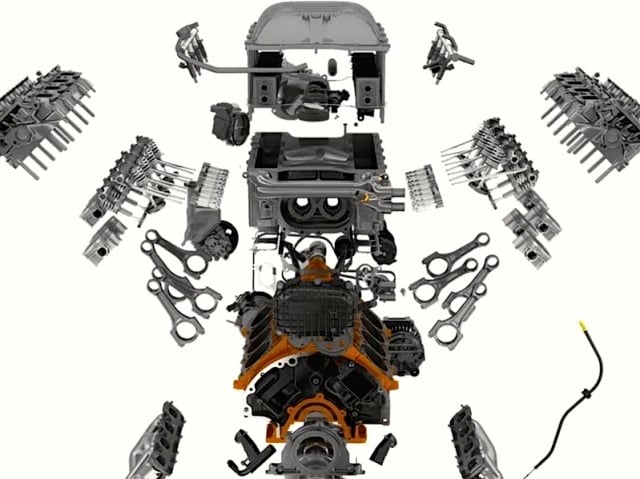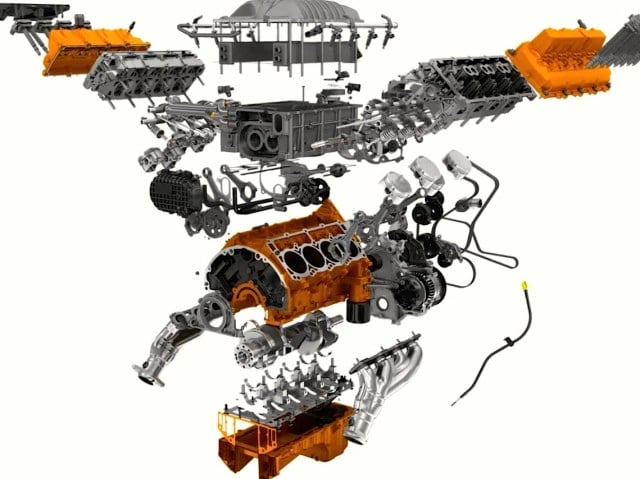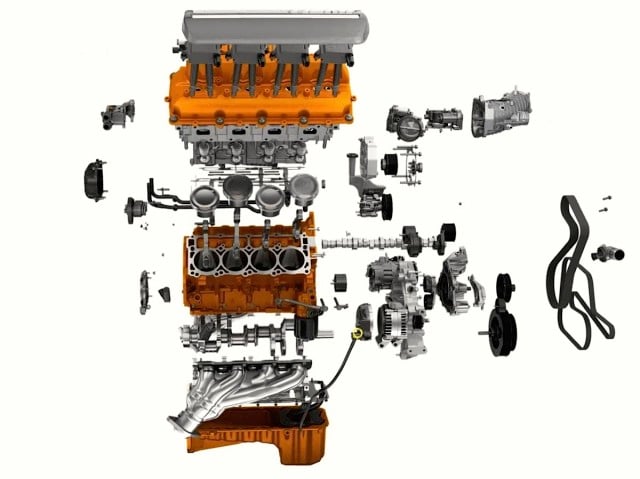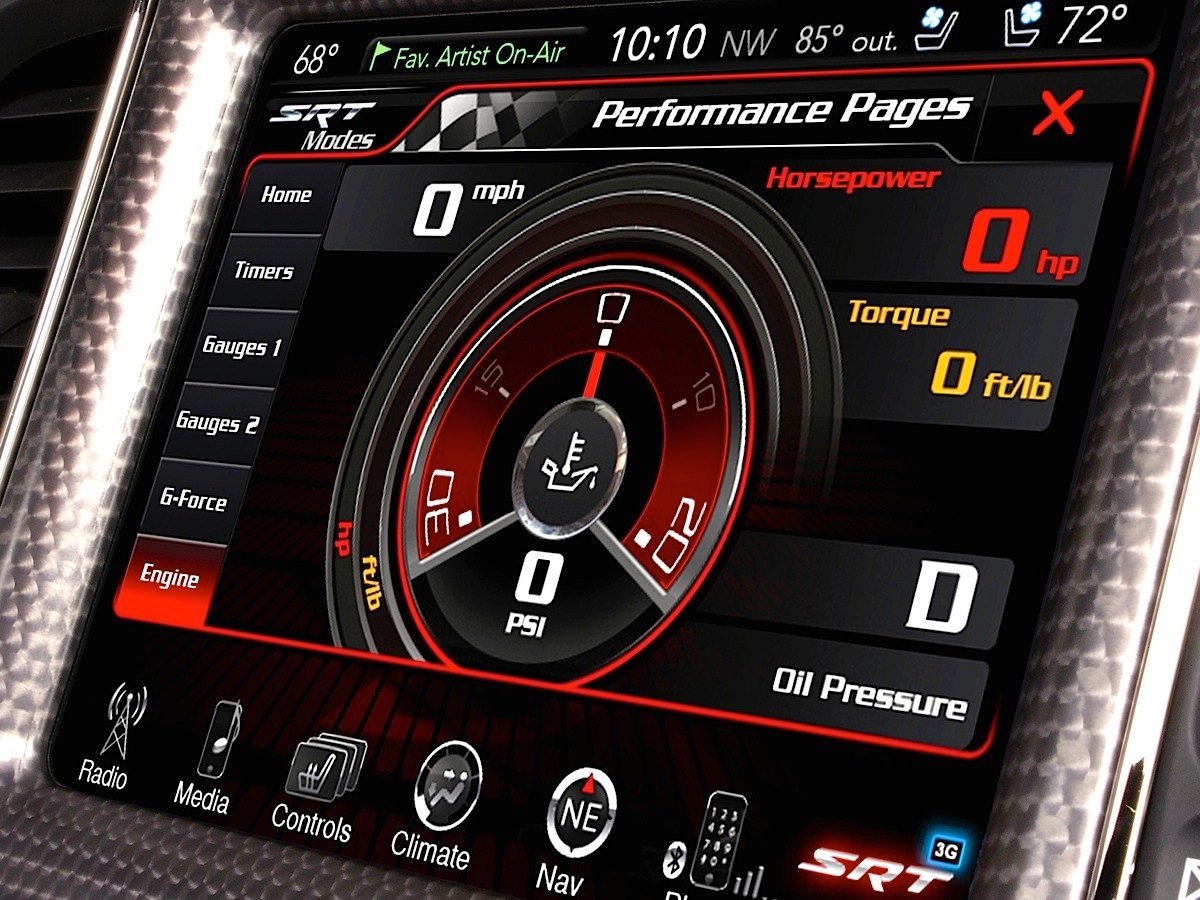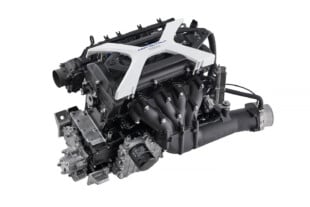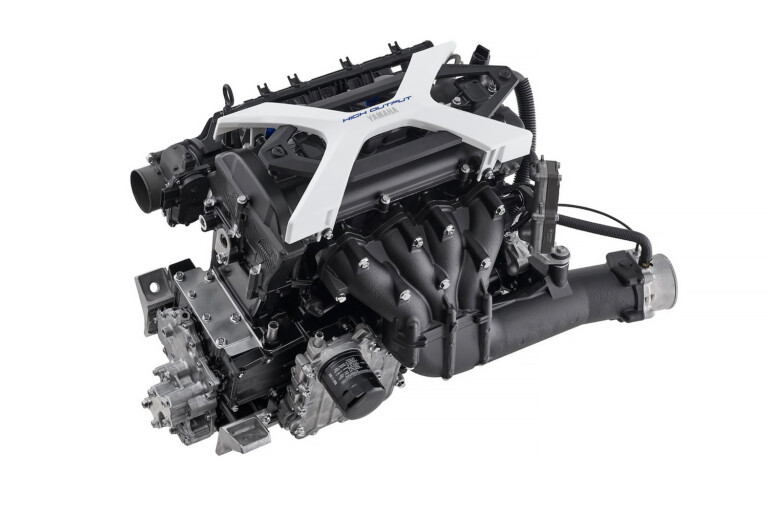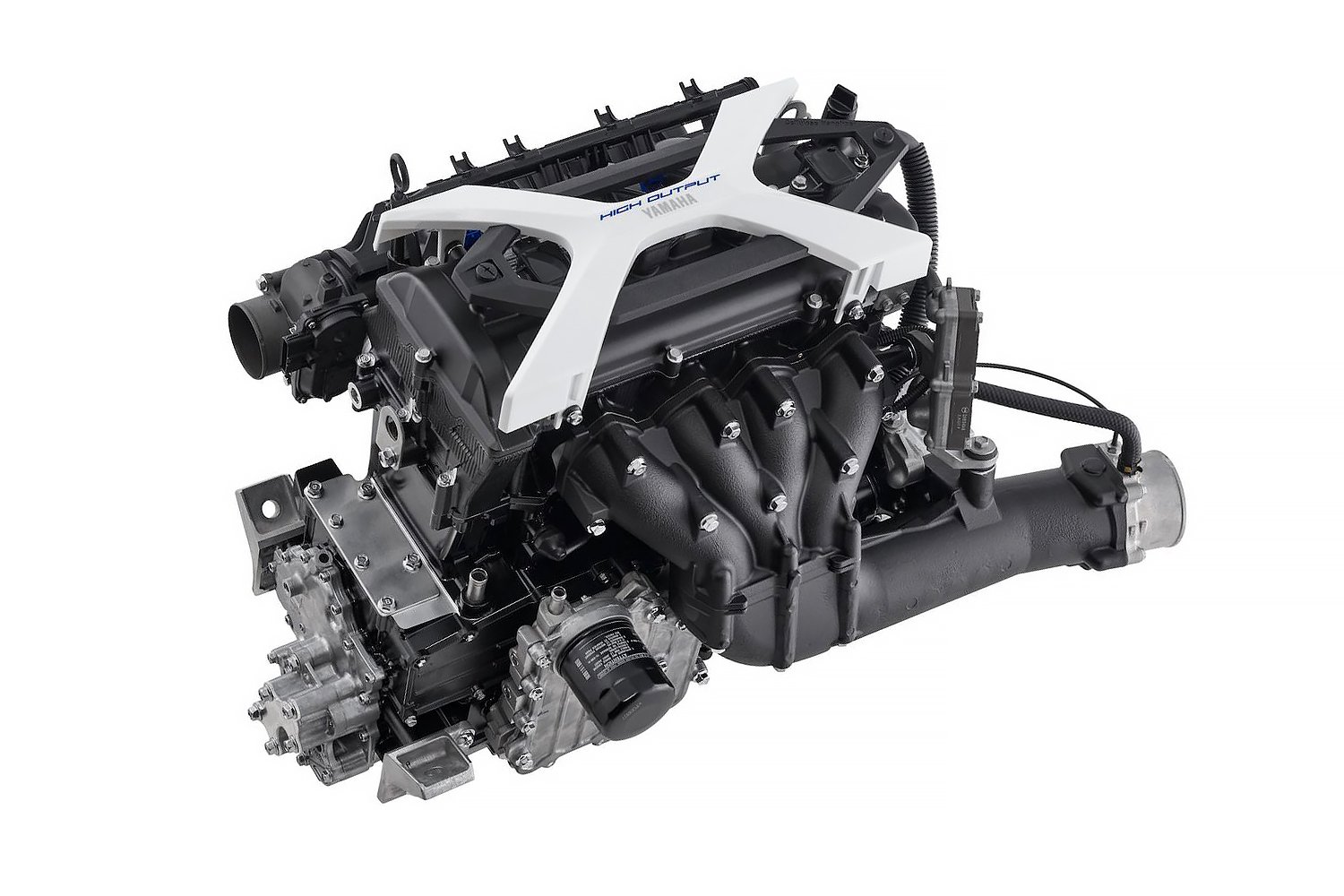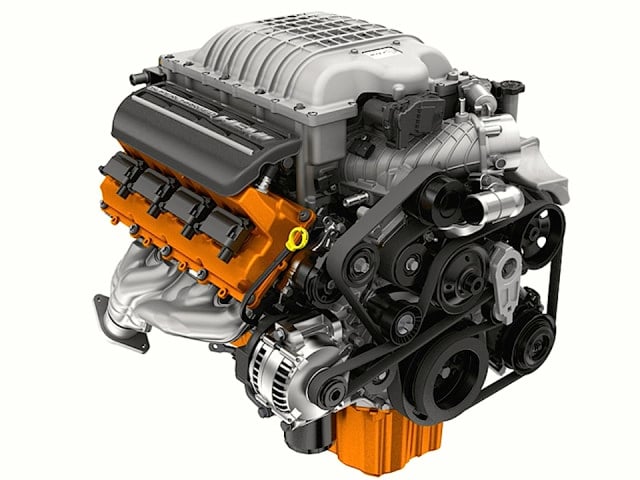 Development of the new Dodge 6.2-liter supercharged Hellcat Hemi engine focused on two parallel objectives: make more than 700 horsepower, and make it live.
Development of the new Dodge 6.2-liter supercharged Hellcat Hemi engine focused on two parallel objectives: make more than 700 horsepower, and make it live.
To achieve the former, a 2.4-liter twin-screw supercharger provides nearly 12 pounds of boost to produce 707 horsepower with 650 lb-ft peak torque. To ensure the latter, Chrysler powertrain engineers strengthened nearly every component in the engine. To validate those changes, the team built an entirely new dyno cell for testing, because none of the existing lab facilities were capable of handling that much power.
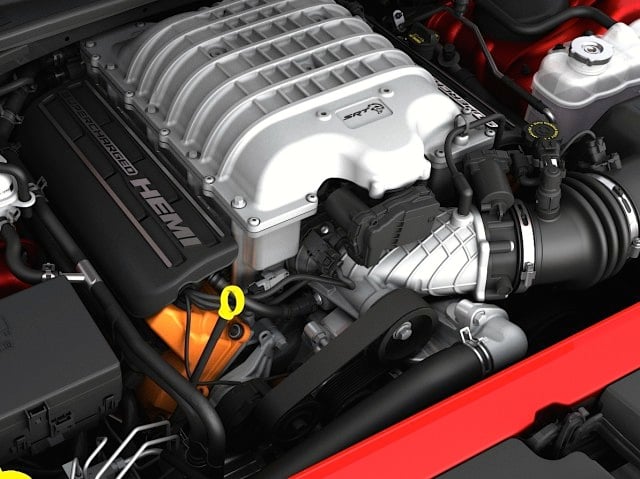 Built for the 2015 Dodge Challenger SRT, the Hellcat’s foundation is a 90-degree V8 truck block found in Ram heavy-duty pickups. SRT considered developing an aluminum cylinder block, but the cost and durability advantages of the existing iron block were too attractive to ignore.
Built for the 2015 Dodge Challenger SRT, the Hellcat’s foundation is a 90-degree V8 truck block found in Ram heavy-duty pickups. SRT considered developing an aluminum cylinder block, but the cost and durability advantages of the existing iron block were too attractive to ignore.
“Were not saying aluminum was an impossibility,” explains Gregg Black, chief engineer on the Hellcat Hemi project, “but the iron gives us the stiffness that helps prevent distortion under the high cylinder pressures.”
Computer modeling predicted cylinder pressures approaching 1,600 psi. Given that the Hellcat engine sports a 4.09-inch cylinder bore on a 4.46-inch bore centerline, significant strengthening measures would have been necessary on an aluminum block to support those high cylinder pressures.
“We already had a 6.4-liter block with a high duty cycle developed for trucks,” Black tells EngineLabs. “We knew the strength of that block had been upgraded for that program. It made sense to leverage hardware already available.”
While the Hellcat starts with a block that is cast and machined on the same line as a Ram truck engine, the Dodge block, of course, is painted bright Hemi Orange.
Check out this video of a Hellcat Hemi engine cutaway with moving parts!
Strengthening the bottom end
A forged-steel crank with a 3.58-inch stroke produces the final 6,166 cc displacement (370 cubic inches). Why didn’t SRT stay with the 3.72-inch-stroke crank found in the 6.4-liter engine?
“The crank stresses anticipated required us to reduce the stroke,” says Black. “That much less cross-sectional area between the pins and main structure makes a big difference in the strength and stiffness of the crank.”
Unlike any other Chrysler product, the Hellcat crank has induction-hardened bearing surfaces. But like all other Chrysler engines, the Hellcat uses powder-forged connecting rods—although the metallic compound was upgraded to deal with higher firing pressures. Forged aluminum pistons are unique to the Hellcat to deliver the 9.5:1 compression ratio. The second and oil rings are direct carryover from the 6.4-liter Apache engine, but the first compression ring features a PVD coating. Piston skirts are graphite coated, and the piston pin is DLC coated.
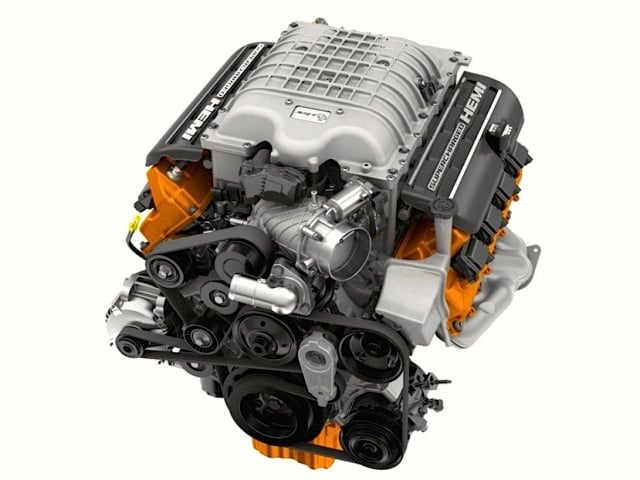 The basic cylinder head design, including port shapes and sizes, carry over from the Apache, although there are casting changes to accommodate the supercharger and accessory drive mounting points. The big difference is that the Hellcat head is cast with upgraded 356-T6 alloy. The double-wall exhaust manifolds are also carryover from the Apache.
The basic cylinder head design, including port shapes and sizes, carry over from the Apache, although there are casting changes to accommodate the supercharger and accessory drive mounting points. The big difference is that the Hellcat head is cast with upgraded 356-T6 alloy. The double-wall exhaust manifolds are also carryover from the Apache.
“Once we get a decent flowing exhaust manifold that packages in the vehicle, it makes a good solution for our engine, as well,” adds Black, who coincidentally has the Hellcat’s exhaust note for a ringtone on his cellphone.
Supercharger development
Engineers worked with IHI Turbo America to develop the supercharger after testing with other suppliers. IHI builds superchargers for Mercedes AMG engines as well as Mercury Marine applications.
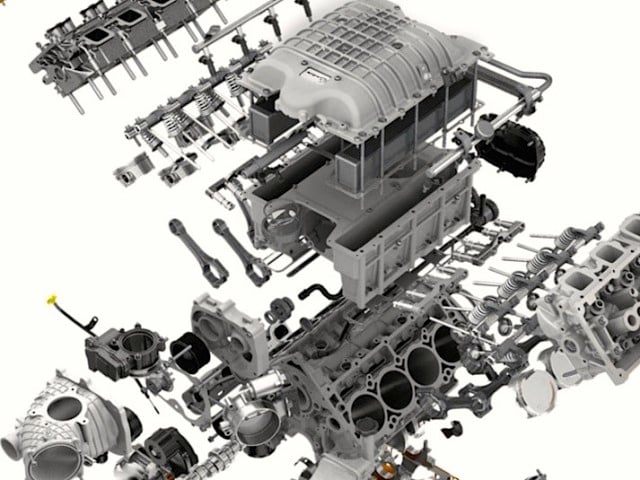 “We were able to get more boost with less belt energy and less temperature increase,” says Black. “That means there’s a smaller load on the intercooler system.”
“We were able to get more boost with less belt energy and less temperature increase,” says Black. “That means there’s a smaller load on the intercooler system.”
Basically, air is drawn through a grille-mounted Air Catcher inlet port to a twin-inlet, 8-liter air box before it’s directed to the 92mm throttle body — the largest in Chrysler engine inventory. A large nose piece in front of the supercharger spreads out the air to the supercharger inlet. The twin rotors (3-lobe male, 5-lobe female) are a helical design and compress the air through an outlet on top and to the rear of the supercharger housing into a common plenum.
“We designed the airflow path in the plenum to separate and direct the flow to the two banks,” says Black. “On top are large radii pulling the flow forward.”
Separate integral charge coolers are mounted on each side of the supercharger and are designed to reduce the inlet air temperature from around 210 degrees F as it leaves the supercharger to 145 degrees F before entering the cylinder heads.
The supercharger is driven 2.36:1 over the engine crank speed, resulting in the low-speed rotor turning a maximum of 14,500 and the high-speed rotor spinning as high as 24,000 rpm.
Setting the boost levels
“Overdrive is one of the variables we tweaked during development,” says Black, noting that both virtual and dyno testing were used. “We needed to drive it fast enough to meet the power target but not any faster as that’s just wasted energy.”
The cast aluminum rotors are not only precisely machined for close tolerances but also coated with a proprietary formula of polyimide resins and PTFE lubricant. The coatings help maintain the tight tolerance and compensate for clearance issues during temperature swings.
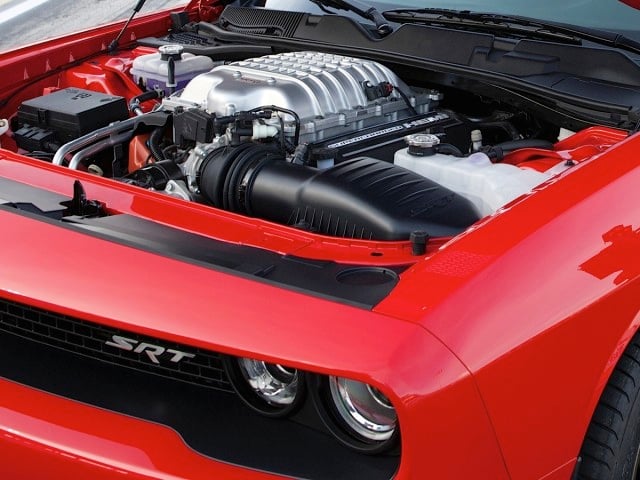 Boost is controlled with with an electrically operated, not vacuum operated, bypass valve.
Boost is controlled with with an electrically operated, not vacuum operated, bypass valve.
“You have to have the bypass there so you don’t create boost when you don’t want it,” explains Black. “From a torque security perspective it had to be very well designed.”
Since the bypass valve had to have the same precision control as a throttle body, powertrain engineers adapted the throttle body from a Tiger Shark engine to serve as the bypass valve.
While supercharger whine is enjoyed at the strip or when cruising the burger stand, it’s not welcomed all the time. Engineers adapted a decoupler on the supercharger drive pulley to calm the action down during idle when the crank is subject to noticeable acceleration and deceleration.
“In essence it drives only in one direction,” says Black. “You’re not putting those positive and negative torques into the supercharger. We were able to quiet the front end of the engine and even the supercharger gears in the back.”
Through precise calibrations in the engine’s ECU, engineers also employed a few “tricks” between the throttle body and bypass positions to minimize supercharger whine when it’s not desired.
Feeding the beast
More fuel was needed to feed the supercharger, so larger fuel injectors rated at 600 cc/min are utilized. SRT also developed a variable fuel pressure system with a pulse-width-modulated in-tank fuel pump.
“One of the challenges in injector sizing is that you need good linear control at low speed for idle quality, yet also deliver enough fuel to make power,” says Black.
With the supercharger pumping out up to 11.6 psi of boost, there’s plenty of air getting into the cylinders.
Drivers can monitor a myriad of engine functions with the Challenger SRT's display.
“Now we don’t have to push the cam events quite as hard,” adds Black, noting the Hellcat valve lift of 14.25 mm intake and 14.0 mm exhaust is less than the Apache cam. “We were able to back off the lift profile and still get power and performance.”
The camshaft can be phased to move the torque curve slightly or improve emissions, but the change in advance or retard is the same for both the intake and exhaust valves. Engineers studied the option of using a “cam-in-cam” to provide independent control of the valves — much like the concentric camshaft found in the Viper V10 engine.
“We were able to meet the goals set out for this program without going to that technology,” says Black, adding that the remainder of the valvetrain is a direct carryover from the Apache — except for the exhaust valves getting a material upgrade to withstand higher temperatures.
Lubrication was improved with a high-flow gerotor oil pump and individual piston squirters; plus, there’s an engine oil cooler for the Hellcat-specific 0W-40 Pennzoil synthetic oil.
The Hellcat Hemi will be assembled in Chrysler’s Saltillo, Mexico, engine plant. Unlike other production engines, all Hellcats will receive a 42-minute dyno shakedown before it’s shipped off to the vehicle assembly plant.



